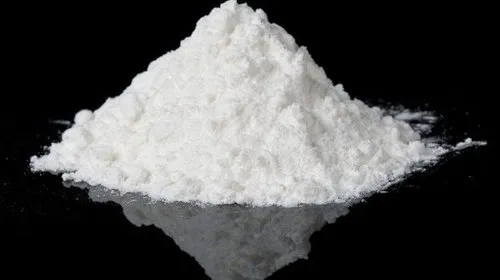Blog
Calcium Carbonate Solubility: A Comprehensive Guide
Calcium carbonate solubility is an important concept in various fields, including chemistry, environmental science, and industrial applications. Understanding how calcium carbonate dissolves in different conditions, such as water, temperature, and pH, can help optimize its use in products ranging from construction materials to supplements. In this article, we will explore the factors affecting calcium carbonate solubility and why it matters.
What Is Calcium Carbonate?
Calcium carbonate is a chemical compound with the formula CaCO₃. It is a common substance found in rocks, such as limestone and marble, and is the main component of shells of marine organisms, snails, and eggs. Calcium carbonate has various uses, such as in construction, pharmaceuticals, and as an antacid. However, its solubility in water plays a key role in determining how it can be applied in different industries.

Factors Affecting Calcium Carbonate Solubility
Calcium carbonate solubility is influenced by several key factors, which are important to consider for both natural processes and industrial applications. Let’s take a look at these factors:
1. Temperature and Calcium Carbonate Solubility
Temperature has a direct effect on calcium carbonate solubility. At lower temperatures, calcium carbonate is less soluble in water. As the temperature increases, the solubility decreases even further. This inverse relationship is crucial for industries that rely on calcium carbonate in cooling systems or other processes where temperature fluctuations occur.
2. pH Levels and Calcium Carbonate Solubility
The pH level of the environment plays a significant role in calcium carbonate. In acidic environments (pH below 7), calcium carbonate is more soluble. This is because acids react with calcium carbonate, breaking it down into calcium ions and carbon dioxide. In neutral or basic conditions, calcium carbonate becomes less soluble, which is important for industries using it in alkaline solutions.
3. Presence of Carbon Dioxide
The presence of carbon dioxide (CO₂) in water increases calcium carbonate. CO₂ reacts with water to form carbonic acid, which then reacts with calcium carbonate, increasing its solubility. This is particularly important in natural bodies of water where the levels of CO₂ can fluctuate, impacting calcium carbonate’s solubility in aquatic ecosystems.
4. Pressure and Solubility
Pressure can also influence calcium carbonate , although its effect is less significant than temperature or pH. Higher pressure tends to increase solubility slightly, which is important in deep-sea environments or in industrial processes where high pressure is used.
Applications of Calcium Carbonate Solubility
Calcium carbonate’s solubility affects how it is used across different industries. Understanding the solubility behavior of this compound ensures its effective application. Some common uses include:
1. Water Treatment
In water treatment plants, calcium carbonate is often used to neutralize acidic water and adjust pH levels. Knowing its solubility helps in determining the right amount to use for effective results.
2. Agriculture
Calcium carbonate is used to balance soil pH levels, promoting healthy crop growth. Its solubility determines how quickly it can take effect in soil, influencing the amount and frequency of its application.
3. Construction Materials
Calcium carbonate is a key ingredient in cement and concrete production. Its solubility impacts the setting time and strength of concrete, making it essential for construction projects.
4. Pharmaceuticals
In the pharmaceutical industry, calcium carbonate is used as an antacid. Its solubility in the digestive system determines how fast it can relieve symptoms of acid reflux and indigestion.
Challenges of Calcium Carbonate Solubility in Industries
Despite its wide range of applications, calcium carbonate presents some challenges. For instance, in water systems, calcium carbonate can precipitate out and cause scaling in pipes and equipment. Scaling can reduce efficiency and increase maintenance costs. Understanding and controlling solubility in these systems is crucial for reducing downtime and enhancing performance.
Additionally, in environmental applications, excessive calcium carbonate dissolution can lead to problems such as ocean acidification, where too much dissolved CO₂ reduces the pH of water, impacting marine life.
Controlling Calcium Carbonate Solubility
There are several methods to control calcium carbonate , especially in industrial settings. These include:
1. Using Anti-scalants
In water treatment systems, anti-scalants are chemicals that prevent calcium carbonate from precipitating out of the water, reducing the risk of scaling.
2. Adjusting pH Levels
In processes where calcium carbonate needs to be controlled, adjusting the pH of the solution can make a significant difference. For example, adding acid can increase solubility, while adding a base will decrease it.
3. Temperature Regulation
Regulating the temperature of a solution can help manage calcium carbonate . For example, in cooling systems, lowering the temperature can reduce the risk of calcium carbonate precipitation.
Conclusion: Understanding Calcium Carbonate Solubility
It is a critical factor in many industries, from agriculture and construction to water treatment and pharmaceuticals. By understanding how factors like temperature, pH, pressure, and CO₂ levels affect solubility, businesses can optimize their use of calcium carbonate for greater efficiency and better results.
